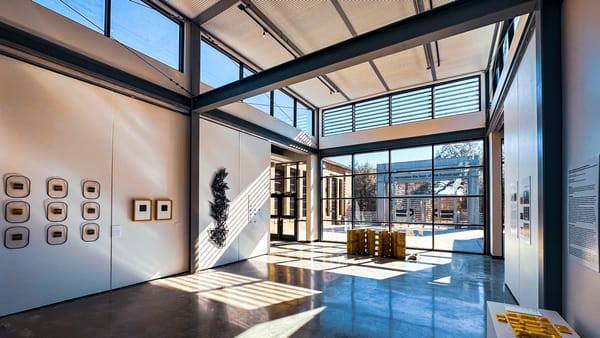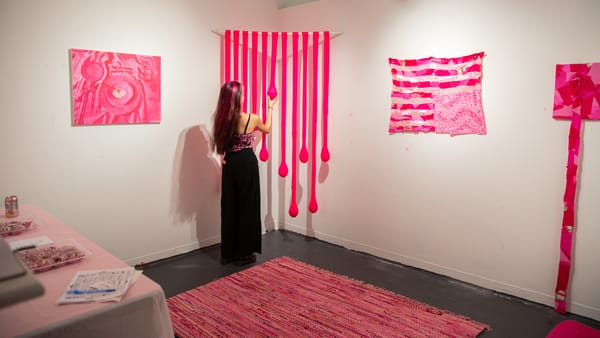Why Museums Can’t Always Fall Back on Endowments
The COVID-19 pandemic may be an opportunity to look transparently at museum endowments and their limitations, and consider the need for alternative sources of support in the months to come.

When Christy Coleman, executive director of the Jamestown-Yorktown Foundation in Virginia, tweeted an explainer about museum layoffs and budget shortfalls due to COVID-19, she was not prepared for the amount of attention it would receive.
“I posted that first tweet for people who are outside of the industry, to explain to them why museums are closing,” she told Hyperallergic, adding that even her own peers reached out to thank her. “I had no idea people would respond to it the way they did.”
That some institutions could amass endowments in the tens or hundreds of millions and still decide to slash their staff during a crisis strikes some as a puzzling case of cognitive dissonance at best; an unexplainable act of cruelty at worst. With their cool, neat rows of zeros, these many-digit figures loom over staff like taunting reminders of the paychecks they might not receive. In New York City, the Guggenheim furloughed 92 staff members last Friday; the Whitney laid off 76 employees a week prior. The Museum of Modern Art (MoMA), with its endowment of over $1 billion, terminated all freelance educator contracts, acknowledging that it could be years before the museum returns to “budget and operations levels to require educator services.” Citing the Guggenheim’s $85 million endowment, a union worker at the museum described its decision to let go of staff as “a moral failure.”
The coronavirus pandemic has made wealth inequalities salient across all industries, and in the case of the cultural sector, vulnerable arts workers are justly clamoring for answers. Coleman’s timely tweet proves that there is an urgent conversation still to be had about museum finances. The crisis may provide such an opportunity: to look transparently at the ways in which institutions are funded, at the purpose and limitations of endowments, and the need for increased and alternative sources of support in the months to come.
The paradox of endowments is that their primary function is not to be spent but to grow. Coleman defines them as “a pool of money that has been given or set aside to use the interest earned on it to support operations or special initiatives.”
“Restrictions suggest that you cannot use the principal, the core amount, you can only draw down what it earns in the market,” she adds.
While turning to these funds in times of crisis seems like a natural inclination, crises usually also impact the economy at large — the very apparatus that nurtures and feeds them. Market volatility, such as that observed during the pandemic, will deepen any gashes institutions have already made to endowments by making larger-than-usual emergency withdrawals.
Coleman says the Jamestown-Yorktown Foundation lost 19 percent of its endowment value through the end of March. “Even taking the four or five percent that we would normally take is going to decrease that principal that remains,” said Coleman.
Further restrictions are imposed by donors, who may designate their gifts for specific purposes, and by state governments. (Since it was approved in 2006, most states have adopted a version of the Uniform Prudent Management of Institutional Funds Act (UPMIFA), a multifaceted law that loosens some restrictions on nonprofits’ endowment draws.) This week, the Association of Art Museum Directors (AAMD) announced it would stop penalizing institutions choosing to tap into restricted assets, including income from endowments, to cover operating expenses in the next two years. Still, that resolution does not lift donor- or state-imposed restrictions, only AAMD-related sanctions; institutions must still seek approval to access and use restricted funding.
In the cases of museums, economic uncertainty during COVID-19 is compounded by a looming fear of thinned out revenues for years to come, even once the curve flattens. Coleman, who has led institutions through two prior financial crises — the Charles H. Wright Museum of African American History in Michigan during the fallout after September 11 and the American Civil War Center in Virginia during the Great Recession — believes the current pandemic is uncharted territory even by these standards.
“The problem is, we don’t know what this is going to look like on the other side. We have no idea,” she says.
“If we knew for a fact that three months from now everything’s going to return to normal, that we’ll still see the same number of visitors we had before … But it takes longer than that. You’re talking about at least an 18-24 month event horizon.”
Institutions are implementing a variety of strategies to deal with present budget shortfalls. The Metropolitan Museum of Art pulls roughly half of its $320 million annual operating budget from its $3.4 billion endowment. Although it projects a $100 million shortfall caused by the pandemic-related closure, the museum does not expect its endowment draw to be larger this year.
Instead, in order to pay its staff of 2,200 through May 2, the Met turned to a combination of means: cutting programming, imposing a hiring freeze, deferring infrastructure spending, and fundraising.
Even with all these contingency measures in place, the museum foresees that the extension of pay during a period of no revenue sources to add significantly to its operating deficit.
“Endowment gifts are inter-generational gifts — they are a profoundly generous and important way that donors of one era ensure that an institution’s mission can be everlasting. Here at The Met, literally half of all we do — the dozens of exhibitions, the welcoming of hundreds of thousands of students, the publishing of scholarly work, the global scientific research – is funded by our endowment, which was slowly, and assiduously built, one gift at a time for over a century,” Kenneth Weine, Chief Communications Officer at the Met, told Hyperallergic.
“If an institution spends from its endowment corpus, it is literally taking funds from every subsequent year of its operating budget,” added Weine.
The vast majority of museums, however, have minimal or no endowments to speak of, and are in critical need of public support. Last month, the Met launched its campaign #CongressSaveCulture to advocate for $4 billion to be allotted to financially at-risk arts nonprofits in the $2 trillion stimulus package.
“We’ve got 35,000 museums in the United States. Only about 4 percent of those are art museums to start with. And the wealthiest of our institutions are art museums, that’s where you see the huge endowments,” said Coleman.
“They’re not in the local historical society, they’re not at the children’s museums. Most of those are operating on very tight margins. So when you cut off the primary means for us to operate, like admission and attendance, like any business, we’re struggling.”
While museums are vital parts of public life, public funding falls far short of need. According to the American Alliance of Museums, most museums are treading water, losing $33 million a day due to closures and in dire need of federal support to cover basic expenses.
The COVID-19 crisis has brought additional scrutiny to other aspects of cultural institutions’ financial infrastructure. Disparities in staff salaries have become the subject of renewed attention; last year, collective Art + Museum Transparency (AMT) identified sharp divides in compensation with its crowdsourced museum salary spreadsheet. Leadership at several institutions have announced they will be taking pay cuts in recent weeks, including the Guggenheim, where employees making more than $80,000 will see a cut.
“We understand the argument is usually that you have to pay well to attract superlative talent, including to directorships, but we all work with some supremely talented people who, last time we checked, work for a lot less than six or seven figures,” said Michelle Millar Fisher of AMT in a presentation co-authored by the group for an online webinar last last week.
“Instead of taking 10, 20, or 30 percent pay cuts for a few months, just go without, period, or give up a much larger chunk for a more extended period of time,” Millar Fisher continued. She cited MoMA’s decision to terminate educator contracts; director Glenn Lowry, she said, earned $1,288,527 as a base salary and around $2.3 million in bonuses in 2018.
For struggling institutions, the formula for survival may depend on factors including but not limited to endowment size and draw restrictions, such as funding model. Museums heavily dependent on earned revenue, like admissions costs and gift shop sales, will have to amp up fundraising efforts. The Centre Pompidou in Paris, for example, projects losses of €1.2 million (~$1.3 million) per month from stalled admissions and retail revenue, according to Peter Keller, Director of the International Council of Museums (ICOM).
Or, if they’re lucky enough to have them, museums could pull from reserve funds. Blair Murphy, curator of exhibitions at Arlington Arts Center (AAC) in Virginia, cites best practices for nonprofits as suggesting a three to six months reserve, therefore bypassing the need to dip into endowments in unforeseen circumstances.
“It is difficult to hear that institutions have a certain amount of money on paper and they’re laying off workers,” said Murphy. “But sometimes endowments are tied up in restrictions, in a vehicle where you can’t just get the money back, and really reserve funds are the cash on hand for emergencies.”
In the past, AAC has maintained a reserve fund equal to only one month’s expenses; last year, the organization was able to bolster the fund to the recommended six months of expenses thanks to an unexpected bequest. Still, Murphy says even the recommended amount of backup savings may prove insufficient in a crisis the scale of COVID-19.
AAC was fortunate to receive a gift that could be allocated to operations. In many cases, donor-imposed restrictions mean funds can only be used to cover certain expenses; sexier asks, such as art acquisitions, are typically easier to fundraise for than, say, an institution’s HVAC costs.
Could board members step in to save sinking staff? “When you have billionaires on your board, that may be a logical thing to do,” said Coleman, stressing that the bulk of museums do not. “One board member might say, ‘I’ll put down the $100 million to cover this.’ They could. But will they? Probably not. Not without getting their name on something.”
If there ever was a time for the walls to come down between a museum’s trustees and top leadership and its staff, it is now, as the present public health crisis makes distinctions in access and privilege permanently more stark.
Carin Kuoni, director and chief curator of the Vera List Center for Art and Politics, suggests exchanges between employees and leaders as a way to forge stronger connections among different tiers of staff. In a conversation with Hyperallergic, she cited German artist Christian Jankowski’s “Dienstbesprechung” (“Briefing”), a 35-minute film that documents the day-to-day operations of the Kunstmuseum Stuttgart in preparation for his 2008 retrospective. But in Jankowski’s piece, each museum staffer has switched jobs with another employee: the Kunstmuseum’s technical director, normally tasked with art installation, writes a catalogue essay; a security guard becomes a curator.
Kuoni believes Jankowski’s role reversal model could be a “provocative invitation” for museum staff to shadow leaders and trustees. “It seems important to understand what other people’s responsibilities actually entail,” she said. “The current situation, where we are forced for better or worse to look into each others’ offices or homes, reinforces that desire to know more about these individuals who are part of what we are as institutions.”
Coleman thinks museum leaders could start by having candid conversations about finances with their front-line staff, rather than offering limited explanations for decisions like furloughing workers.
“That’s all a part of transparent leadership to me, but I know there’s tons of other places where that doesn’t happen,” she told Hyperallergic. “We talk about stuff in the open, rather than just saying, ‘budgets are tight.’ I’m more inclined to have that conversation with every level of my organization versus just senior leadership or the board.”
The decision to communicate with staff is a variation of management style, says Coleman, and factors such as generation and gender have an impact on how leaders perceive what transparency means.
“There are some leaders who are like, ‘People will know what I need them to know when I need them to know it,’” she said. “But how do you get people invested in what’s happening if you’re treating them like they don’t need to know?”





